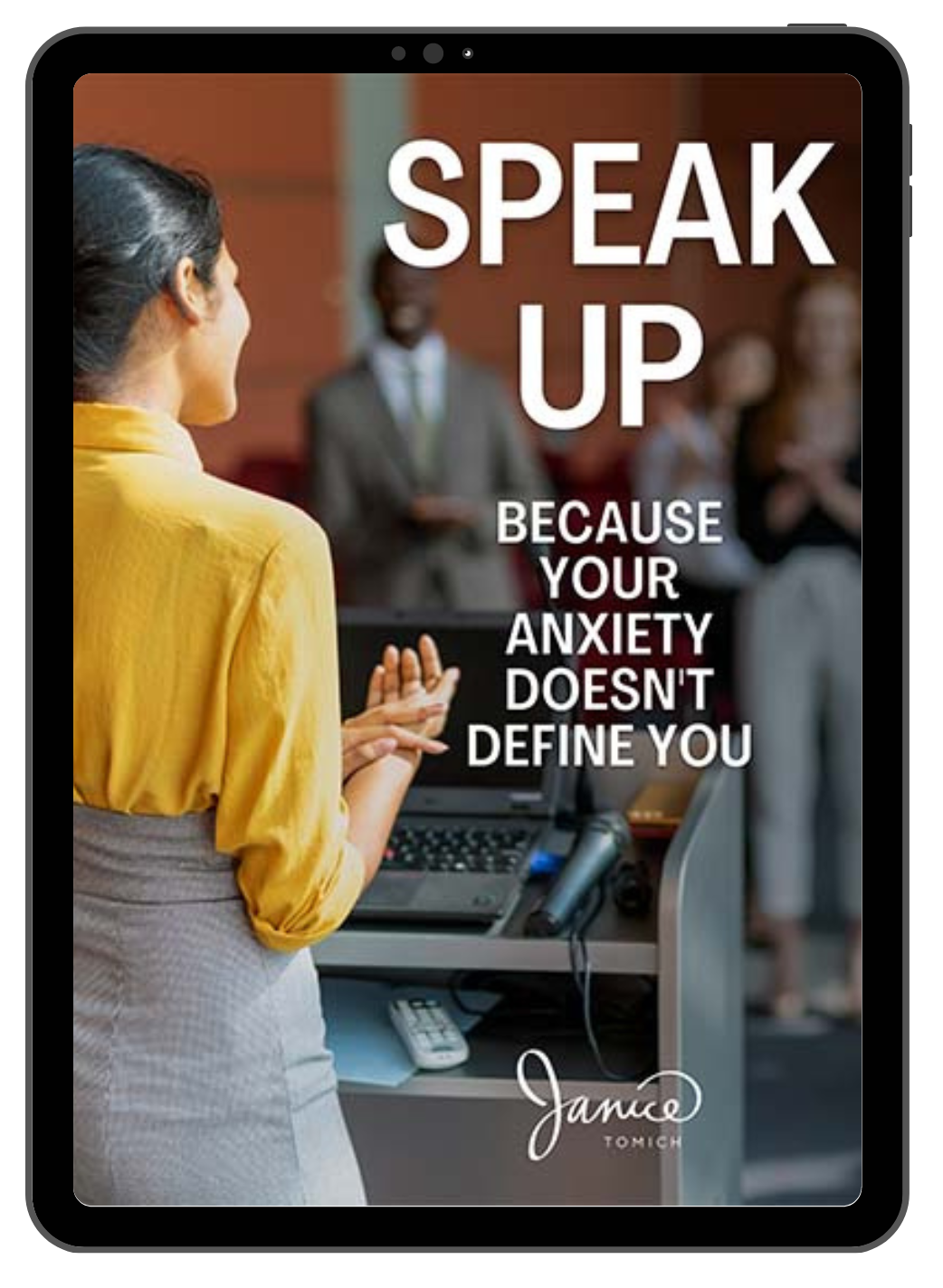Making eye contact while public speaking is a simple yet powerful way to connect with an audience.
Keeping eye contact with a single person while making a point can change a passive listener to one who feels engaged with you and your ideas. You’ll notice the difference too of how you’re able to warm up a room if you invest in interacting with your audience simply through eye contact.
However, looking at someone in the eyes can be difficult if you’re feeling nervous or it’s not something your used to doing.
Here’s five quick tips to help you make eye contact while public speaking.
Table of Contents
#1 – Before you speak, pause and connect
At the beginning of your presentation, even before you start speaking, pause. Take this moment to connect with your audience and yourself. First, square your body at your starting position on stage. Then, turn your head from left to right to the center of where your audience is seated. Then, turn your head from right to left then back to center again. This moment will give you an opportunity to see your audience, connect, and ground yourself before you start your presentation.
#2- Pick one person and maintain eye contact for 3 to 5 seconds.
Often, presenters find themselves maintaining eye contact with a single person for too long. This can make that person feel uncomfortable and feel like they are being singled out. My suggestion is to pick one person, maintain eye contact for three to five seconds, then find someone else in the audience. You may be wondering why three to five seconds? Usually, this is the time it takes to finish a sentence and make a point.
“I was preparing for four presentations and although already comfortable with speaking in front of an audience, I was looking to hone my skills. We worked through all of the presentations together and I felt confident and prepared as I delivered them.“
(info on public speaking coaching package)
#3 – Notice where your eyes are at the end of your sentences

#4 – Practice, practice, practice!
Practice makes perfect. A skill such as making eye contact especially if you’re not used to it can be challenging. To practice this skill, practice looking at someone in the eyes every time you talk with them. You can practice this at home, at work, and even at the grocery store.
#5 – When to break the rules
At times, making eye contact with someone can make them feel vulnerable, disrespected, and uncomfortable. In some cultures, eye contact can be seen as offensive. For example, in Asian cultures, maintaining eye contact with a superior or elder can be seen as a sign of disrespect. If you’re feeling someone is uncomfortable, be respectul and gracious – move on and find someone else in the audience to engage with who is open to connecting with you.
With practice, you will master of this important public speaking skill. Practicing eye contact will make you slow down if you’re a nervous speaker – you’ll appear and feel more confident while you deliver your next presentation.
I know it’s hard to have that difficult conversation, pitch that podcast, or choose just the right words to make your presentation come to life.


